Tips for flower growers: how to properly transplant ficus at home
To grow successfully ficus at home, the soil under them needs to be regularly replenished with nutrients. One application of top dressing is indispensable here. After all, the ficus is constantly growing, so the size of the pot needs to be increased. Periodically, there is a need for a plant transplant.
Content:
- When can and can not be transplanted ficus?
- Preparing for transplant
- Ficus transplant rules: step by step instructions
- Ficus care after transplant
When can and can not be transplanted ficus?
Young ficuses are not transplanted in the first years. When the plant reaches three years of age, they begin to change the pot once a year. After 5 years, they are transplanted every 2-3 years. Adult plants are not touched for 5 years or more. In between transplants, add nutrient soil to the surface.
The transplant time is easiest to determine by gently turning the pot on its side and looking at the drainage hole. If sprouted roots peep out of it, this means that there is little room for the roots for normal growth and development. We urgently need to start a transplant.
Several more signs indicate the need for a transplant:
- The roots have grown and do not fit in the pot, they intertwine and begin to peek out of the topsoil. Such a plant requires an urgent transplant.
- Young leaves grow small, not reaching their usual size.
- The soil in the pot is knocked down in clods and dries out completely in 2 days, despite the abundant watering.
The ficus just bought in the store is transplanted. There, the plants are usually fed with a large amount of fertilizers, which have a detrimental effect on the condition of the soil. But you cannot rush to transplant such a plant. Indeed, for him, the very fact of moving to a different climate and lighting conditions is stressful. Therefore, it is better to wait until the plant acclimates and gets used to the new conditions.
If it feels good, and the condition of the soil is not suspicious, you can not replant it until it reaches 3 years of age.
There are transplant bans. Ficus is not transplanted during the period of active growth and sap flow. It is better to carry out the procedure in early spring or late winter. At this time, young leaves are not formed, but the dormant period ends. Sometimes inexperienced growers try to transplant ficus just because they have purchased a new pot.
Ficus cannot be transplanted if the previous procedure was carried out recently, and the roots did not have time to braid the inside of the pot. Ficus is not transplanted in late autumn and winter. In this case, the plant will hurt for a long time, the leaves will turn yellow and fall off, and the new ones will grow very weakly. The ficus will lose its attractive appearance, it may die.
Preparing for transplant
A couple of days before the transplant, they begin to prepare the dishes, soil and the ficus itself. Stop watering a large plant. Ficus is transferred into a new dish along with a lump of earth. If it is wet, it will be more difficult to remove it. The plant is transplanted into a dish, the diameter of which is 3-5 cm larger than the previous one. The depth of the pot should also be slightly deeper than the old one. The material can be either plastic or ceramics.Sometimes adult ficuses are planted in wooden or ceramic tubs. Such dishes are highly resistant.
Do not take wide, flat dishes. Root system grows more inward, although it does not grow as fast as the ground part. A plant in such a pot will be less resistant. Do not choose too wide and deep dishes "in reserve". A large amount of soil that is not braided by roots will acidify from moisture that is not required. For ficus with a length of 2 m and above, use a pot with a volume of at least 20 liters.
When buying a pot, pay attention to the presence and size of drainage holes.
Prepare material for drainage. The stones should not be sharp, so as not to cut the delicate roots. You should not take small expanded clay, which can clog the drainage holes, which will lead to stagnation of water in the lower part of the pot. They use gravel, river pebbles, large expanded clay. You can not bring sphagnum moss, eggshells, because they increase the acidity of the soil.
Ficus soil can be purchased at a flower shop. But sometimes there is low-lying peat, which is not suitable for this plant. It has impurities that lead to a decrease in the water and air permeability of the soil, increases it acidity... You can prepare the soil yourself. To do this, take in equal parts sod and garden land, compost, fine gravel. Peat is also used, but not low-lying peat, but horse peat.
The prepared soil is disinfected:
- Double freezing.
- By calcining in an oven for 30 minutes at a temperature of 110 degrees, a layer of soil 5 cm thick.
- Spill with a hot solution of potassium permanganate, wrap in a plastic bag for an hour. You can use it after 12 hours.
Sterile soil is spilled with Fitosporin solution. It will protect ficus roots from fungal diseases.
Ficus transplant rules: step by step instructions
The prepared pot is placed next to the plant. Lay a layer of drainage with a height of at least 5 cm on the bottom.Pour some prepared soil so that the transshipment to the edge of the pot remains 5 cm unfilled. To remove ficus made of ceramic dishes, you can knock with the back of your hand on the sides of the pot. The plastic walls can be slightly squeezed with your hands. A layer of earth will fall off the walls, and the plant will be easier to remove. You cannot cut the walls of the pot with a knife. Do not turn or shake the tree.
If the plant cannot be freed from the pot, you can slightly moisten the soil around the perimeter. After the root system of the ficus begins to come out of the dish, gently turn the small pot over, covering the soil with your hand. A large tree is laid on its side and taken out on film or paper prepared in advance.
If the roots have sprouted through the drainage hole, carefully thread them inward so that they do not break off.
Set the ficus in an upright position on the film. Do not take out drainage, do not shake off the soil from the root system. This procedure leads to the breakage of small roots, which are engaged in the supply of water and nutrients. With a large amount of damage, the tree dries up. If there is a suspicion that the roots have rotted, examine them from above. Rotten ones differ from healthy ones in color and softness. They acquire a dark brown color, close to black, and become soft. Such roots are cut with a sharp knife and sprinkled with crushed coal.
Take the tree with your hands by the trunk and carefully transfer it to a new pot along with the earth and drainage, braided by the roots. Set the tree in the center and estimate the distance to the top edge of the pot. If it is less than 5 cm, take out the ficus back and select part of the land. If the distance is more than 5 cm, the soil is filled up. It is allowed to fill up the earth on the surface of the earthen coma not higher than 2.5 cm. The holes on the sides are filled with prepared soil. Leave no airspace. But they do not compact too much, so as not to break off the roots.
Ficus care after transplant
Water the transplanted ficus.First, a little room temperature water is added so that the soil is moistened and sagged, filling the remaining voids. A weak solution of Kornevin or another root formation stimulator is prepared, and the ficus is watered abundantly. Wait 15-20 minutes. Drain the water from the pan. Do not water until the soil in the pot is dry, but not dry.
Ficus is installed in a bright place, but not in direct sunlight.
Sometimes, after transplanting, the ficus loses its leaves. This is how he reacts to the stress he has endured. If the transplant procedure was performed correctly, do not worry. Do not overfill, fertilize, do not take out of the pot again.
Watering is carried out as the soil dries up, given that there are no or few leaves, so the need for moisture drops sharply. It is better to replace it with spraying, which is carried out up to 2 times a day. Sometimes the transplanted ficus is covered with a transparent plastic bag. But such a shelter needs to be removed every day in order to ventilate.
More information can be found in the video:



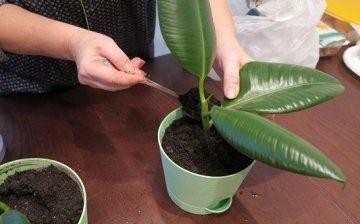

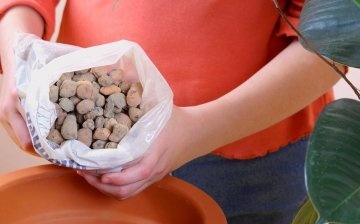
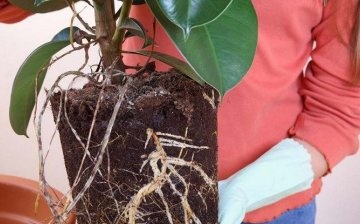







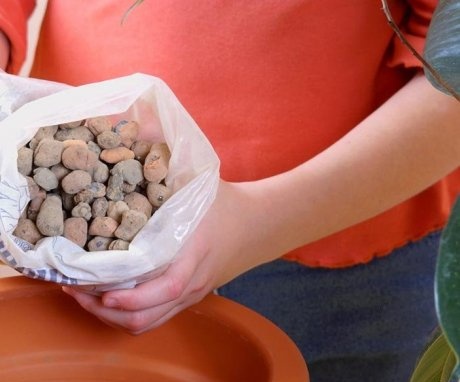
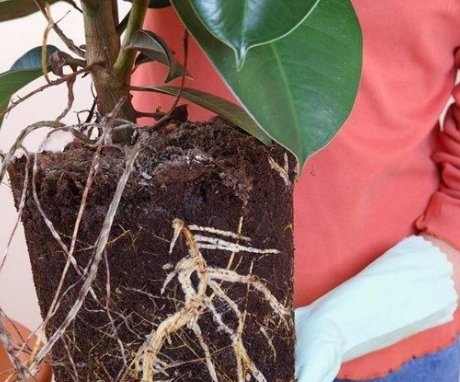
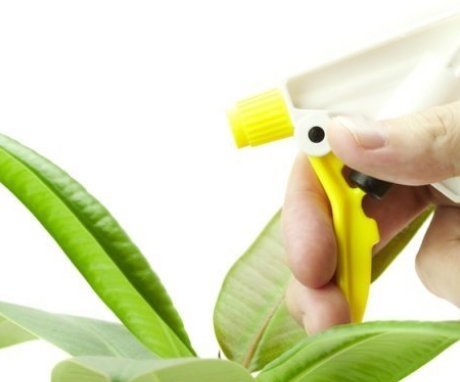
And my ficus for some reason does not grow. Either the care is not correct, or the light is not enough and the humidity is not suitable. Transplanted, as written in the article, only when the roots do not fit in the pot, no more than once a year, and later the flower began to fade.